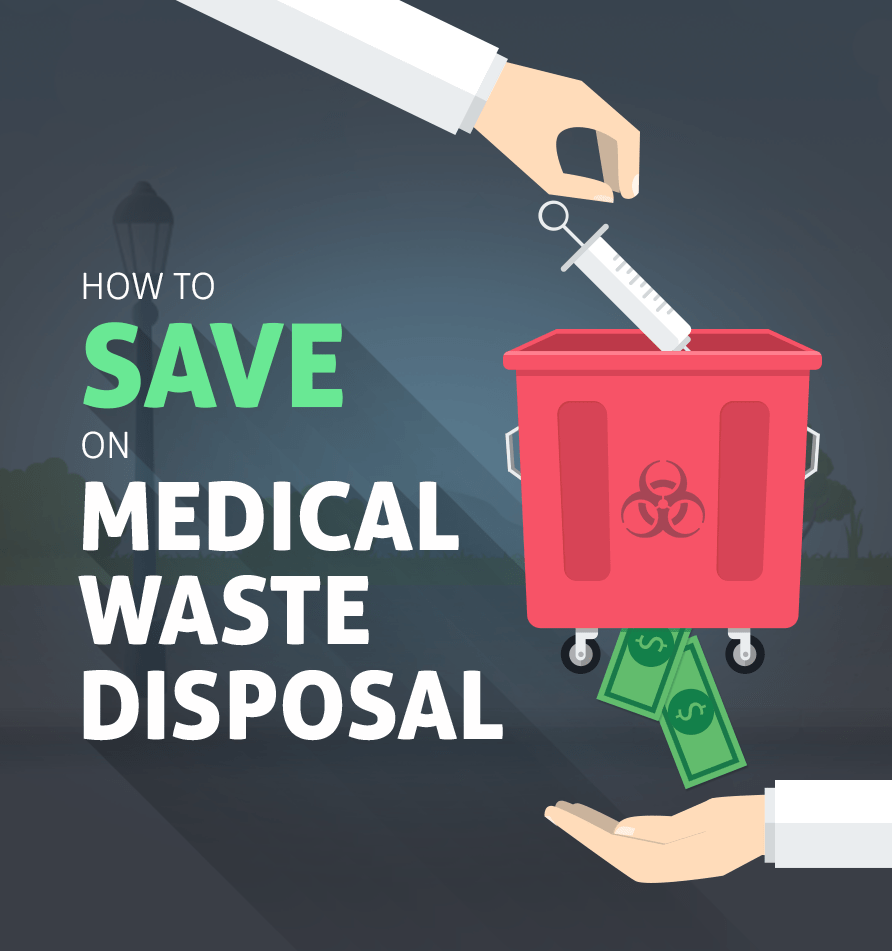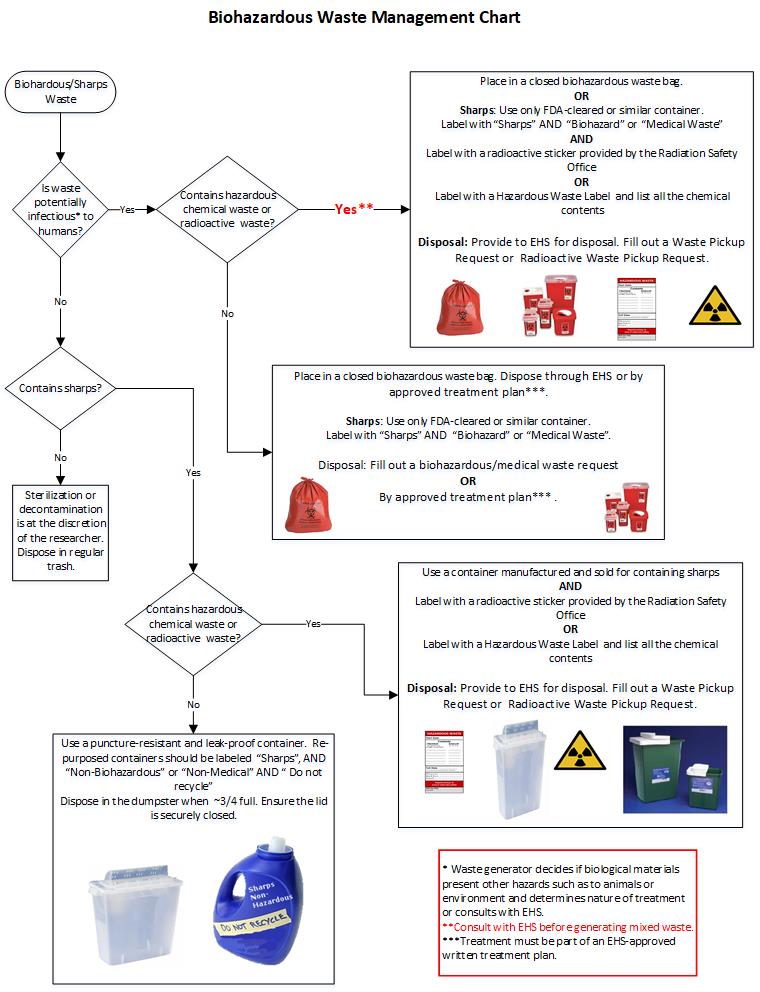Ideal Practices for Medical Waste Management
Clinical waste monitoring is a crucial aspect of healthcare facilities' operations to ensure the safety of patients, staff, and the atmosphere. Carrying out best practices in clinical waste management is necessary to minimize the risks linked with harmful waste.

Segregation and Categorization
In the area of medical waste administration, appropriate segregation and classification are crucial methods for guaranteeing the efficient and risk-free disposal of healthcare-related materials. Medical waste is created from various resources, consisting of healthcare facilities, centers, laboratories, and other healthcare centers. It contains a large range of products, such as needles, syringes, bandages, gloves, and pharmaceutical waste.
Partition includes the methodical separation of various kinds of clinical waste based on their characteristics and possible risks. Sharps waste, such as blades and needles, need to be placed in puncture-resistant containers to protect against injuries and the spread of transmittable conditions.
Categorization is the process of categorizing clinical waste right into different classifications based upon its possible hazards. These groups might include contagious waste, contaminated materials, pharmaceutical waste, and basic waste. By classifying waste, healthcare centers can identify the appropriate disposal approaches and ensure conformity with neighborhood guidelines and standards.
Proper partition and categorization of clinical waste not just safeguard the health and wellness of health care employees and the basic public however also add to the overall efficiency and effectiveness of waste administration. It lowers the danger of accidents, decreases environmental influences, and advertises liable waste disposal techniques.
Correct Storage and Classifying
To ensure the efficient and secure disposal of clinical waste, health care facilities have to stick to appropriate storage and labeling practices. WasteX Medical Waste Disposal. Correct storage space and labeling play an essential duty in preserving the honesty of medical waste administration systems and securing the health and wellness and safety and security of healthcare workers, individuals, and the public
When it comes to storage, it is essential to have marked locations especially developed for various sorts of clinical waste. These locations need to be safe, well-ventilated, and furnished with ideal containers that fulfill regulatory criteria (medical waste removal). Segregation and categorization of waste ought to additionally be taken into account to avoid cross-contamination and possible risks

Regular tracking and assessment of storage areas and containers are necessary to identify any kind of problems or violations. Team must be educated on correct storage and labeling techniques, emphasizing the value of conformity with protocols and laws.
Safe Transportation and Handling
Guaranteeing the protected and correct transportation and handling of medical waste is important for keeping the integrity of waste monitoring systems and securing the health and security of all involved. Clinical waste, that includes things contaminated with contagious materials, pharmaceuticals, and other harmful substances, should be transported in a manner that avoids leakages, spills, and potential contamination.
To attain risk-free transportation and handling, numerous finest techniques ought to be followed. Initially, it is necessary to utilize watertight and puncture-resistant containers that are especially designed for medical waste. These containers must be appropriately sealed and classified to protect against any unexpected direct exposure or messing up. Additionally, waste ought to be segregated based upon its nature and kind to stop cross-contamination.
During transportation, it is necessary to make sure that waste containers are safely secured and saved in a steady manner. Vehicles utilized for delivering medical waste should be equipped with proper security features, such as spill containment systems, to decrease the danger of basics any leaks or spills. Chauffeurs need to obtain training on proper handling and emergency action procedures to properly attend to any type of unanticipated incidents.
Additionally, the transportation and handling of clinical waste need to abide by all appropriate guidelines and standards stated by local, state, and government authorities. WasteX Medical Waste Disposal. medical waste removal. Routine inspections and audits should be carried out to assess conformity and identify any areas for enhancement
Conformity With Regulatory Guidelines
Preserving compliance with regulatory guidelines is important for efficient medical waste management. These standards are established to shield public wellness and the environment by making certain that medical waste is effectively managed, treated, and disposed of. Compliance with governing guidelines helps to protect against the spread of infectious illness, lessen possible hazards, and minimize the overall influence of medical waste on the environment.
To achieve conformity, health care facilities need to remain educated regarding the particular policies controling medical waste administration in their jurisdiction. These regulations may differ from country to country, and also within different states or regions. It is essential for medical care facilities to have an extensive understanding of these standards and to implement ideal approaches and procedures to make sure conformity.
One secret facet of conformity is the correct partition and labeling of different kinds of clinical waste. This consists of separating sharps from various other waste, along with categorizing waste based upon its potential threats. Health care facilities should likewise guarantee that medical waste is stored in appropriate containers and that these containers are appropriately labeled and sealed.
Additionally, compliance with governing guidelines needs health care facilities to develop appropriate training and education programs for team member entailed in medical waste monitoring. This includes giving training on waste segregation, handling, and disposal procedures, along with the appropriate use individual protective tools.
Normal surveillance and audits are likewise crucial to make certain continuous compliance with regulatory standards. This includes conducting normal examinations of waste storage space locations, recording waste monitoring treatments, and preserving records of garbage disposal.
Efficient Disposal Methods
Healthcare facilities need to use reliable disposal techniques for appropriate administration of clinical waste. Inappropriate disposal of clinical waste can position serious health and ecological dangers. There are numerous methods that can be made use of to efficiently get rid of clinical waste, making sure the safety and security of health care workers, clients, and the public.
One typically utilized technique is incineration. Incinerators can securely burn clinical waste at heats, lowering the volume and damaging any potentially damaging microorganisms. Incineration can be expensive and might launch harmful pollutants right into the air if not effectively controlled.
One more approach is autoclaving, which involves subjecting the waste to high-pressure vapor. This process kills microorganisms, infections, and other bacteria, providing the waste secure for disposal in normal waste streams. Autoclaving is a efficient and ecologically friendly approach, yet it requires customized tools and experienced personnel.
Chemical sanitation is also utilized in many cases, where fluid chemicals are put on the waste to decontaminate it. This technique is much less typically made use of because of issues concerning the effectiveness of chemical sanitation and the potential for chemical residues to infect the atmosphere.
In enhancement to these approaches, health care centers need to also carry out correct partition, product packaging, and labeling of medical waste to guarantee its risk-free handling and disposal. Routine training and education of team on correct waste monitoring methods are important to preserving reliable disposal approaches.
Verdict
In conclusion, carrying out ideal techniques for clinical waste administration is essential for guaranteeing the security of health care workers, patients, and the environment. By effectively setting apart and classifying waste, storing and labeling it correctly, ensuring safe transportation and handling, complying with regulatory guidelines, and using reliable disposal techniques, healthcare facilities can effectively take care of and reduce the threats related to medical waste. It is important for healthcare organizations to stick and focus on to these ideal techniques to maintain a safe and sustainable health care atmosphere.
Medical waste administration is a vital facet of health care facilities' operations to make sure the security of patients, personnel, and the setting. Implementing best practices in clinical waste administration is necessary to decrease the dangers connected with dangerous waste. These categories may include transmittable waste, hazardous waste, pharmaceutical waste, and basic waste.In conclusion, applying finest techniques for clinical waste administration is necessary for making sure the safety of medical care employees, clients, and the setting. By correctly classifying and setting apart waste, saving and classifying it properly, guaranteeing risk-free transportation and handling, complying with regulative guidelines, and employing reliable disposal techniques, healthcare facilities can properly take care of and reduce the threats connected with clinical waste.